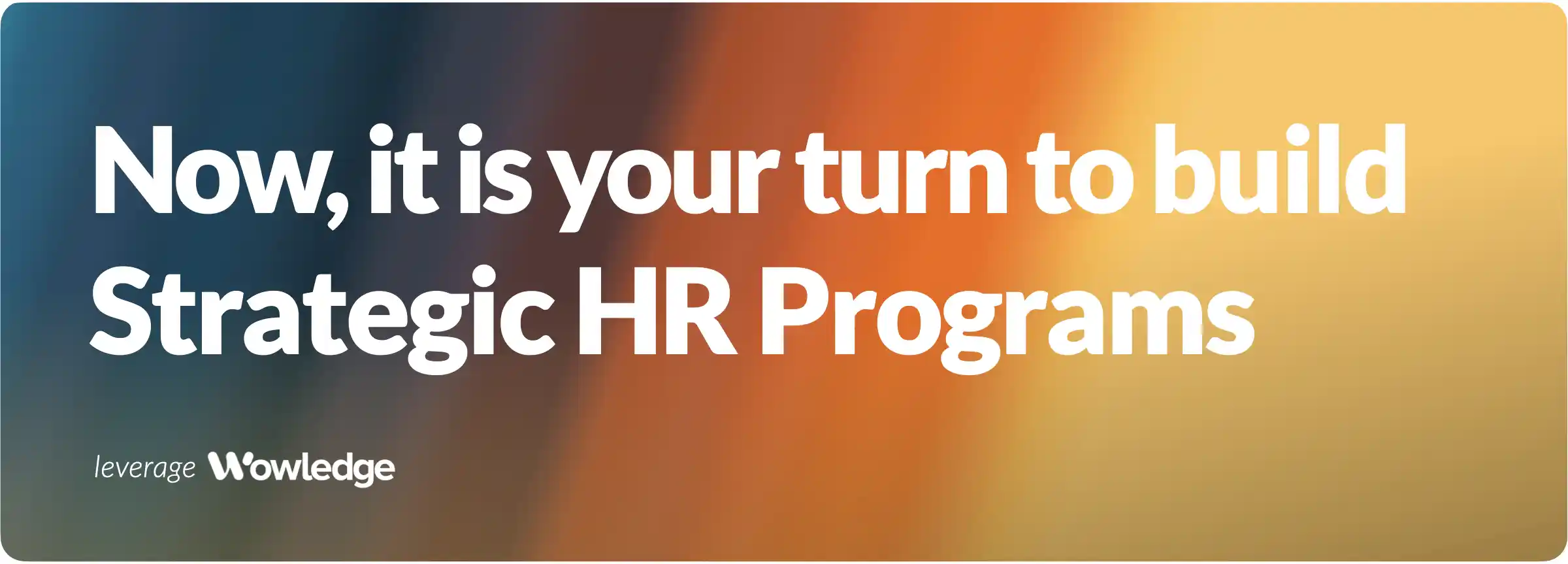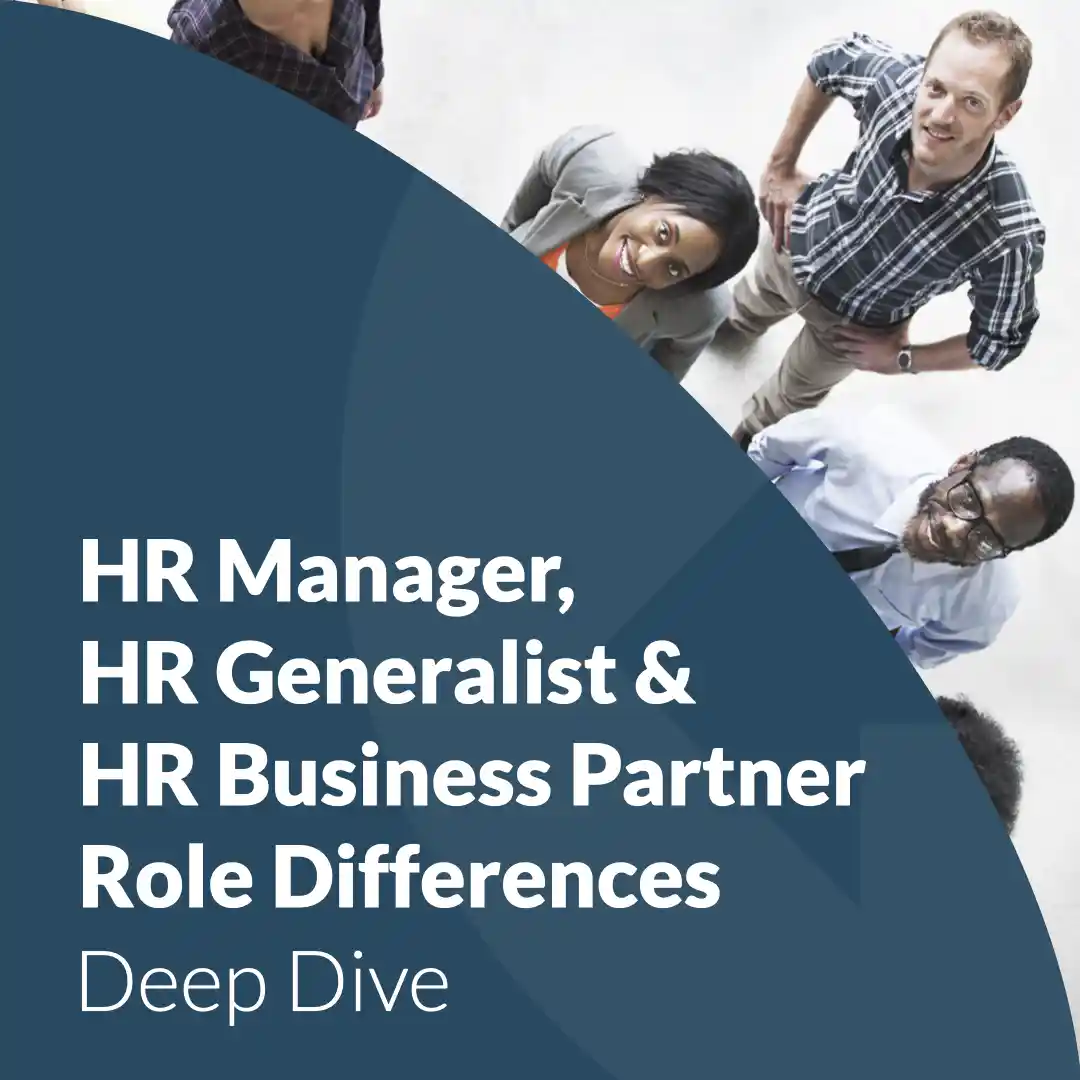The HR Manager role defined
The Human Resources or Personnel Manager serves as the linchpin that ensures the smooth running of employee-related processes within an organization. They focus on the administrative side of HR processes and activities, ensuring compliance and operational effectiveness. While roles like the HR Business Partner (HRBP) or HR Generalist act in more strategic capacities, the HR Manager remains crucial in upholding the fundamental aspects of human resources management, ensuring that the day-to-day needs of both employees and the organization are met.
Historically there have been some distinctions between the terms "HR Manager" and "Personnel Manager" but they became increasingly interchangeable in many contexts with the former being the job title most often used in modern times. The HR Manager today merges both transactional and transformational perspectives based on a shift in how businesses perceive and manage their employees: from resources to be managed to invaluable assets that can strategically drive business success.
Top goals, objectives, and responsibilities of an HR Manager include:
- Employee Records and Administration: One of the primary responsibilities of an HR Manager is to maintain accurate and up-to-date employee records. This includes reviewing and handling essential documentation such as job application forms, employment contracts, benefits enrollment forms, and performance reviews. The objective is to ensure that all employee data is current and compliant with relevant policies, laws and regulations.
- Recruitment and Staffing: While they may not be involved in the strategic side of talent acquisition, HR Managers often play a vital role in the logistics of the recruitment process. This entails job posting, scheduling interviews, conducting initial screening, and coordinating job offers and the onboarding process for new hires.
- Compliance and Regulation: Ensuring that the organization adheres to labor laws and industry regulations is a significant aspect of the HR Manager's role. They stay updated on the latest changes in employment laws, ensuring that the organization's practices and policies are in compliance, thus minimizing legal risks.
- Employee Welfare and Relations: HR Managers often act as the first point of contact for employees regarding grievances, disputes, or clarifications on company policies. They ensure that employee concerns are addressed promptly and work towards fostering a positive work environment. Additionally, they oversee benefits administration, ensuring that employees are able to enroll in annual benefits plans and receive the entitlements they're due, such as leaves, insurance, and other perks.
The HR Generalist role defined
The HR Generalist serves as the versatile backbone of the Human Resources department, equipped with a broad spectrum of HR knowledge and skills. Their expertise across various HR functions ensures that foundational HR operations run smoothly and efficiently. While the HR Business Partner focuses on strategic alignment with specific business units and the HR Manager delves into administrative duties, the HR Generalist stands as the all-rounder, maintaining a finger on the pulse of the organization's human capital needs. They ensure that both day-to-day operations and overarching HR goals are met with efficiency and care.
Top goals, objectives, and responsibilities of an HR Generalist include:
- Recruitment and Onboarding: An HR Generalist often leads the hiring process, from crafting job descriptions to interviewing candidates to recommending and/or approving job offers. Once an employee is hired, the generalist ensures a seamless onboarding experience, acquainting new hires with company policies, culture, and tools necessary for their roles.
- Benefits Administration and Compliance: With a comprehensive understanding of company benefits and labor laws, the HR Generalist manages benefits enrollment, addresses related queries, and ensures that the organization complies with local, state, and federal employment regulations.
- Employee Relations and Engagement: Acting as an approachable HR representative, the generalist addresses employee concerns, provides guidance on interpersonal and departmental issues, and implements engagement initiatives, fostering a positive work environment and strengthening the bond between the organization and its employees.
- HR Records and Documentation: Precision and organization are essential as the HR Generalist manages and maintains employee records, ensuring accuracy, confidentiality, and compliance. This includes tracking and overseeing performance evaluations, the maintenance of training records, and updating HR policies as needed.
The HR Business Partner role defined
The HR Business Partner (HRBP) is a strategic collaborator, bridging the Human Resources organization and specific business units or functions. As HR strategies must be intrinsically tied to business outcomes, the HRBP role addresses the dynamic interplay between employee needs and business goals. Unlike the more administrative HR Manager, or the broad-ranging HR Generalist, the HRBP gets heavily involved in aligning HR initiatives with business strategy. The HR Business Partner success profile must be diversified as they need to evaluate business needs and recommend solutions continuously. For this reason, optimizing HRBP priorities is critical to ensuring their advice and support propels the organization towards its objectives.
Top goals, objectives, and responsibilities of an HR Business Partner include:
- Strategic Alignment: The HRBP is pivotal in ensuring that HR strategies and initiatives align seamlessly with business goals. This involves understanding the nuances of the business and its strategic direction and crafting HR interventions that support and drive these objectives. The goal is to cultivate a workforce equipped and motivated to fulfill the company's mission and vision.
- Talent Management and Development: HRBPs are instrumental in identifying talent gaps within their designated business units and orchestrating plans to bridge them. This includes collaborating on succession planning, facilitating leadership development programs, and ensuring employees have growth opportunities that align with business needs.
- Change Management: As businesses evolve, change is inevitable. HRBPs are often at the forefront of driving organizational change, ensuring that transitions, whether they involve mergers, acquisitions, or shifts in business strategy, are smooth and that employees are engaged and supported throughout the process.
- Stakeholder Collaboration: A significant part of the HRBP's role is to build robust relationships with key stakeholders within their business units. They maintain a key HR coaching and consulting relationship with the business. By acting as advisors, they recommend best practices, gather feedback, and ensure that HR's contributions are relevant and impactful to the business segment they support.
Summary of skills and capabilities required from HR Managers, HRBPs, and HR Generalists
While on the surface, the roles of HR Managers, HR Generalists, and HR Business Partners (HRBPs) might appear to overlap, each position possesses a unique set of skills and expertise tailored to their specific functions. Each role's distinct competencies highlight the nuances that differentiate them and the unique value they bring to an organization.
Skills and Capabilities Summary Example
)

Enabling practices and resources
Organizational design includes activities to design and implement an organization that can enable the pursuit of the business strategy and organizational goals.
A well-functioning organization provides clarity regarding the work required to achieve its objectives. It also provides a shared understanding of who will perform that work.
The Capabilities, Tasks, and Roles Worksheet helps define the work to be accomplished in each function or business unit and determine who will complete that work.
